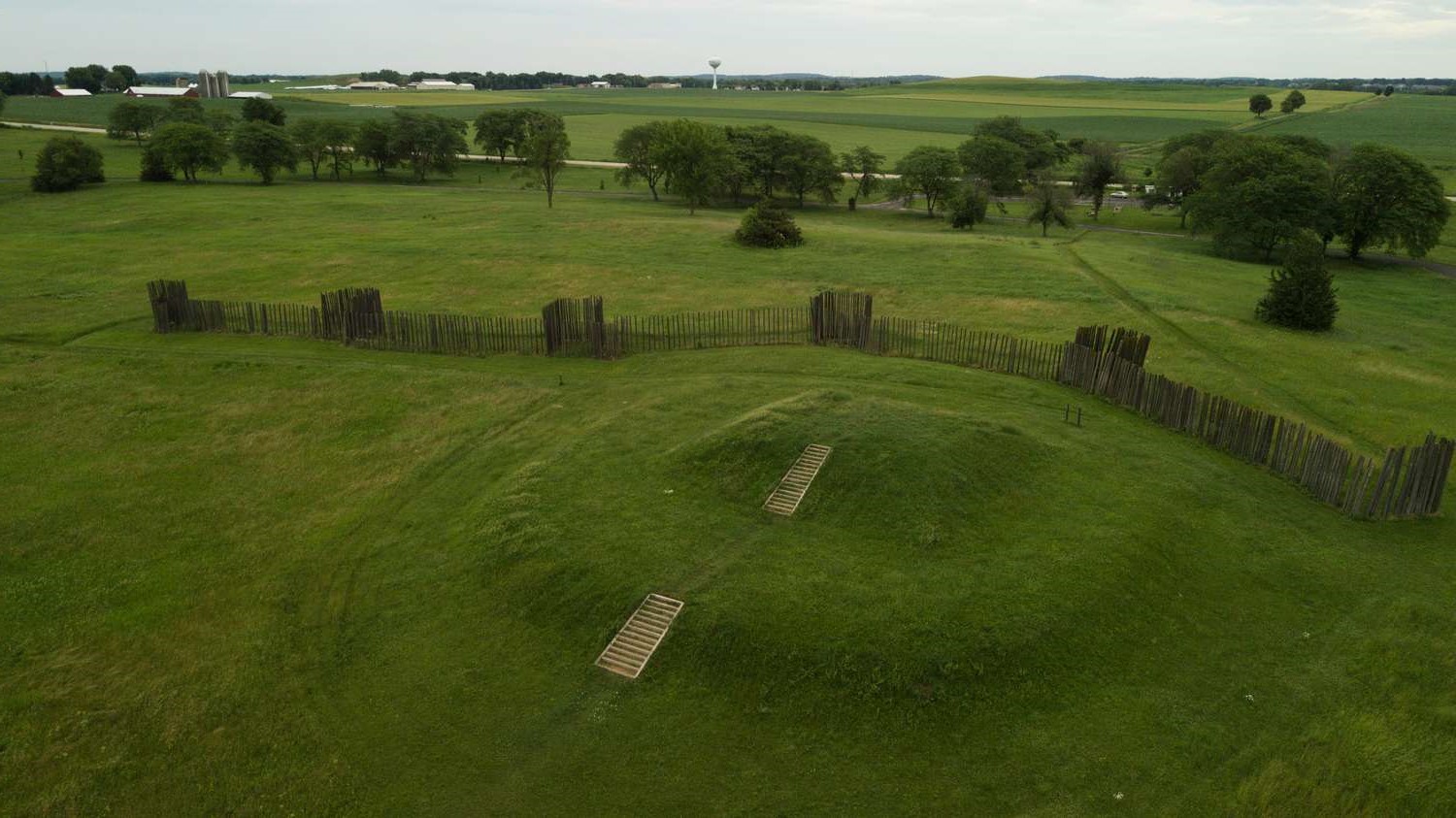
Ever wondered who built those impressive earthen mounds scattered across the landscapes of North America? Well, you're in for a treat! Mound Builders were the master architects behind these ancient marvels. From the mysterious serpent-shaped mounds to towering structures that rival today's skyscrapers in sheer awe, these indigenous peoples crafted earth into forms that have puzzled and fascinated historians and archaeologists alike for centuries. But who were they, really, and what secrets do their mounds hold? Let's dig into the rich soil of history and unearth some fascinating facts about the Mound Builders. Ready to journey back in time and discover the legacy left behind by these incredible architects? Buckle up, because history has never been this intriguing!
Key Takeaways:
- The Mound Builders were ancient Native American cultures who built impressive earth mounds for various purposes, leaving behind a rich and diverse legacy that continues to fascinate and inspire people today.
- These ancient societies constructed elaborate mounds for burial, religious, and residential purposes, showcasing advanced engineering knowledge and social organization, and their legacy challenges stereotypes and expands our understanding of pre-Columbian history.
Who Were the Mound Builders?
Mound Builders were prehistoric indigenous peoples of North America who constructed various styles of earthen mounds for religious, ceremonial, burial, and residential purposes. These mounds, ranging from simple structures to elaborate ones, were primarily built by different Native American cultures over a span of 5,000 years, from approximately 3400 BCE to the 16th century CE.
- Mound Builders is a term that encompasses several distinct cultures, including the Adena, Hopewell, Mississippian, and others, each known for their unique mound-building practices and cultural attributes.
The Purpose of the Mounds
The mounds served multiple purposes, from graves to platforms for buildings and ceremonies. Their construction and use varied significantly across cultures and time periods.
-
Some mounds were used as burial sites, containing artifacts, human remains, and items meant to serve the deceased in the afterlife.
-
Other mounds functioned as platforms for important structures, such as temples, council houses, and leaders' residences, signifying their central role in the community's spiritual and social life.
Construction Techniques
Building these mounds required sophisticated engineering knowledge and a well-organized labor force, demonstrating the advanced social organization of the Mound Builders.
-
Workers would carry baskets of earth from various sources, layering them to create the desired shape. This process could take years, or even generations, to complete.
-
The largest mounds, such as Monks Mound at Cahokia, contain millions of cubic feet of earth, showcasing the immense effort and coordination involved in their construction.
Geographic Spread and Diversity
The Mound Builders' cultures spanned a vast area of North America, from the Great Lakes down to the Gulf of Mexico and from the Atlantic coast to the Mississippi River.
- This wide geographic spread resulted in a diverse range of mound styles and functions, reflecting the varied environments and cultural practices of the builders.
Decline of the Mound Builders
The decline of mound-building cultures is attributed to several factors, including environmental changes, overhunting, and the arrival of European explorers and settlers.
- By the time European explorers arrived in North America, many of the mound-building societies had already vanished, leaving behind their monumental earthworks as silent witnesses of their past.
Rediscovery and Preservation
Interest in the Mound Builders and their constructions resurfaced in the 19th century, leading to archaeological investigations and efforts to preserve these ancient structures.
-
Early theories about the origins of the mounds were speculative and often racially biased, but modern archaeology has clarified much about the Mound Builders' societies and their achievements.
-
Preservation efforts have led to the establishment of several national monuments and parks, protecting these historical sites for future generations to study and appreciate.
The Legacy of the Mound Builders
The Mound Builders left an indelible mark on the landscape of North America, with their earthworks still visible and awe-inspiring today.
-
Their mounds, such as those at Cahokia, Serpent Mound, and Moundville, are considered engineering marvels and are visited by thousands of people each year, drawn by their historical significance and cultural mystery.
-
The study of Mound Builders and their constructions continues to shed light on the complex societies that existed in North America long before European contact, challenging stereotypes and expanding our understanding of pre-Columbian history.
-
Artifacts found within the mounds, including pottery, tools, and ornaments, offer invaluable insights into the daily lives, beliefs, and social structures of these ancient peoples.
-
The legacy of the Mound Builders, preserved in their monumental earthworks, continues to fascinate and inspire, reminding us of the rich and diverse history of indigenous cultures in North America.
A Glimpse into the Legacy of Mound Builders
Diving straight into the heart of our discussion, the Mound Builders have left an indelible mark on history, shaping the cultural and geographical landscape of North America. Their mounds, more than just earthen structures, are a testament to their sophisticated society, intricate trade networks, and spiritual beliefs. As we've journeyed through the fascinating facts about these ancient architects, it's clear their legacy is far-reaching, influencing generations long after their decline. Understanding their contributions offers a richer perspective on the pre-Columbian Americas, reminding us of the complexity and diversity of indigenous cultures. So, next time you hear about the Mound Builders, remember, they're not just a footnote in history but key players in the story of human civilization on this continent.
Frequently Asked Questions
Was this page helpful?
Our commitment to delivering trustworthy and engaging content is at the heart of what we do. Each fact on our site is contributed by real users like you, bringing a wealth of diverse insights and information. To ensure the highest standards of accuracy and reliability, our dedicated editors meticulously review each submission. This process guarantees that the facts we share are not only fascinating but also credible. Trust in our commitment to quality and authenticity as you explore and learn with us.
